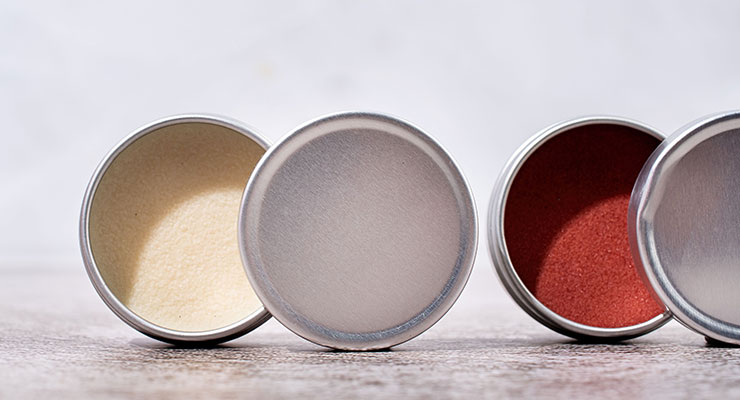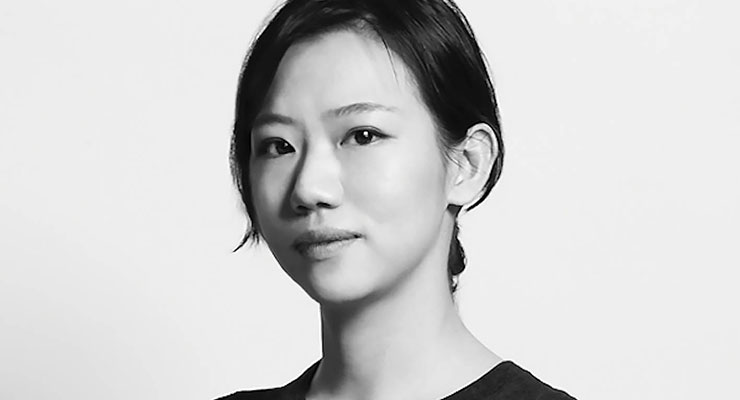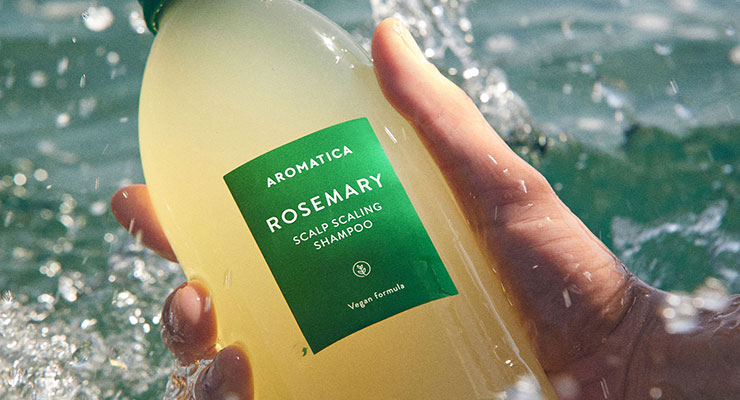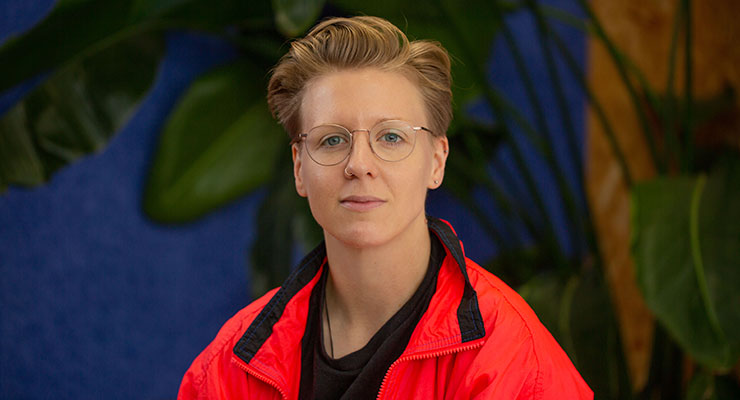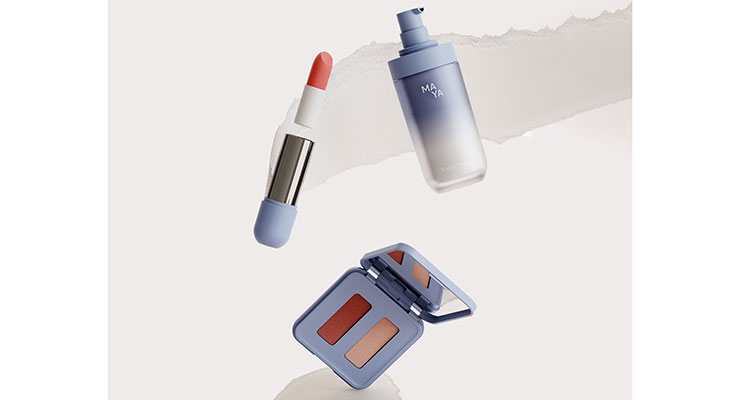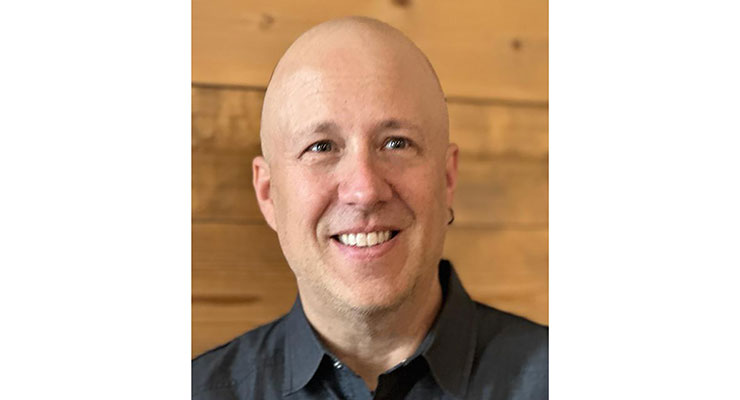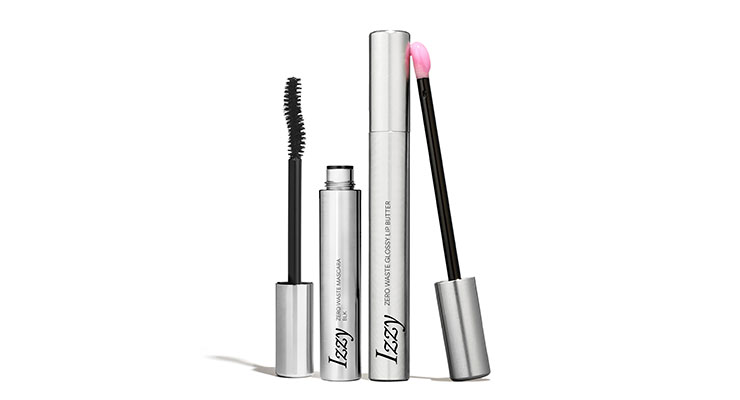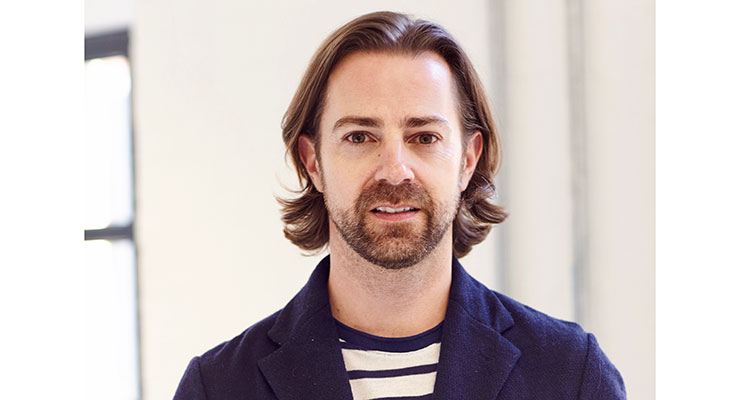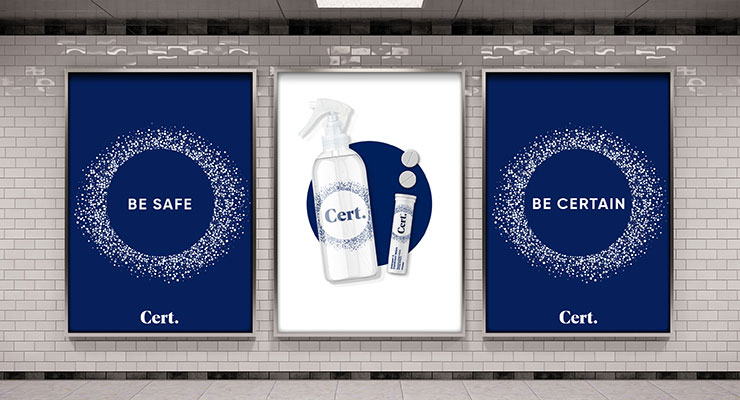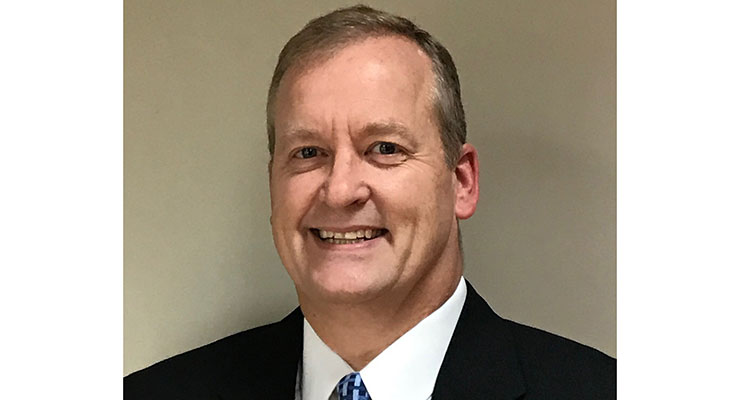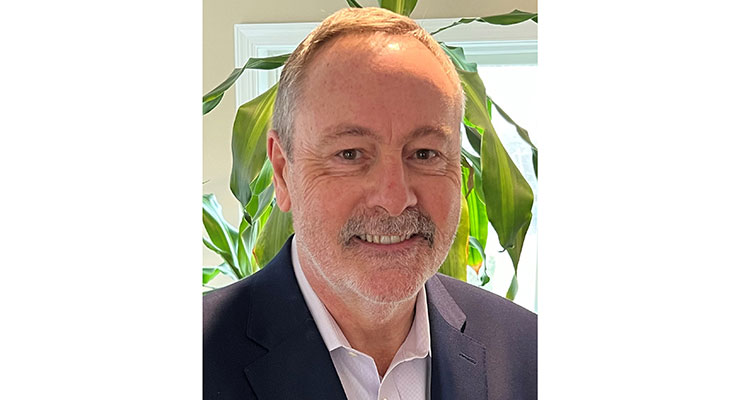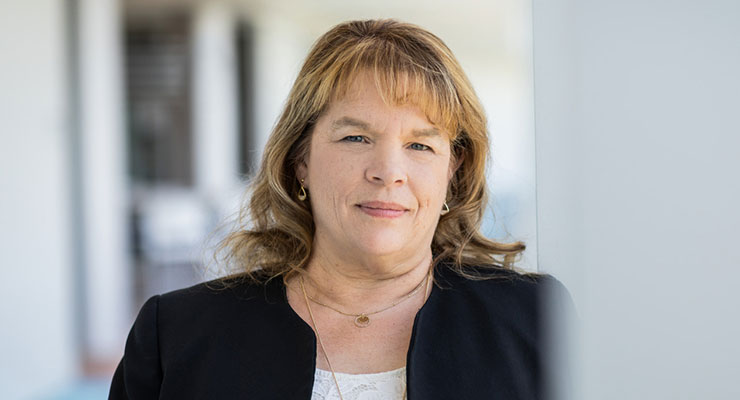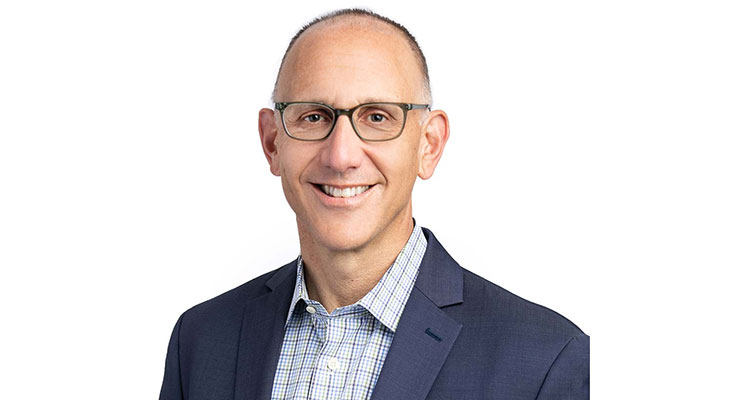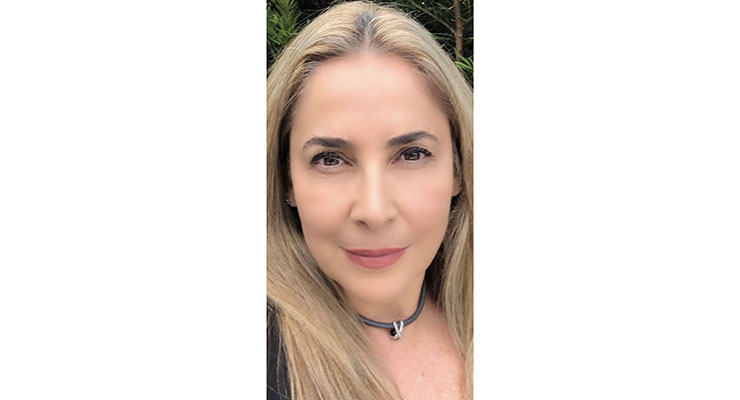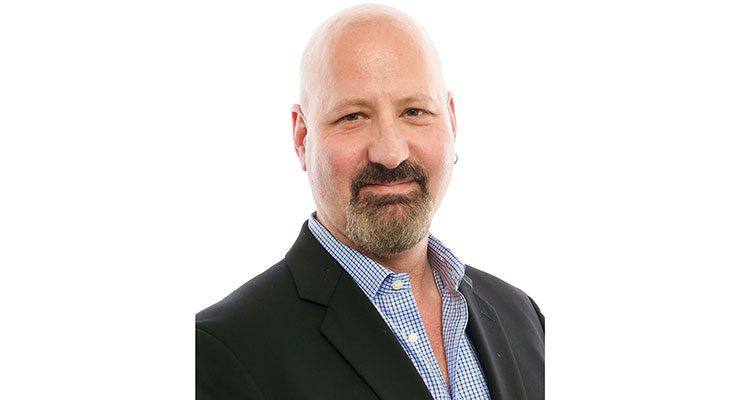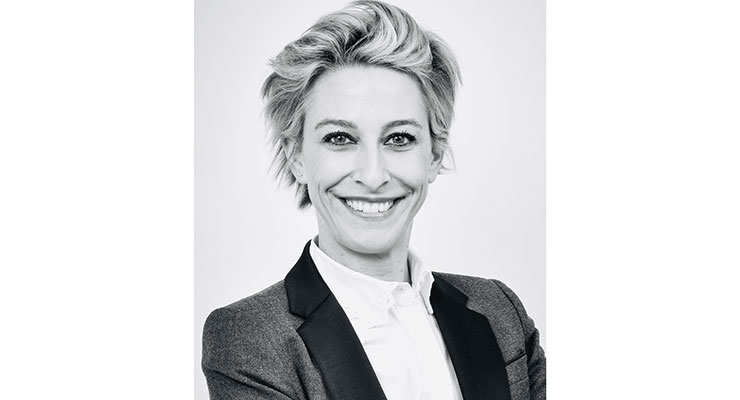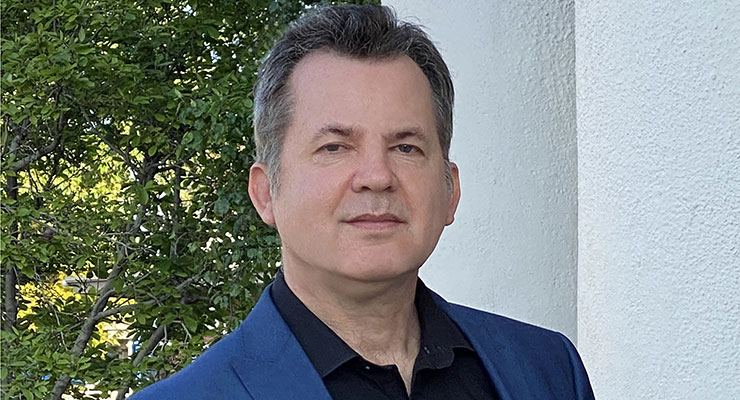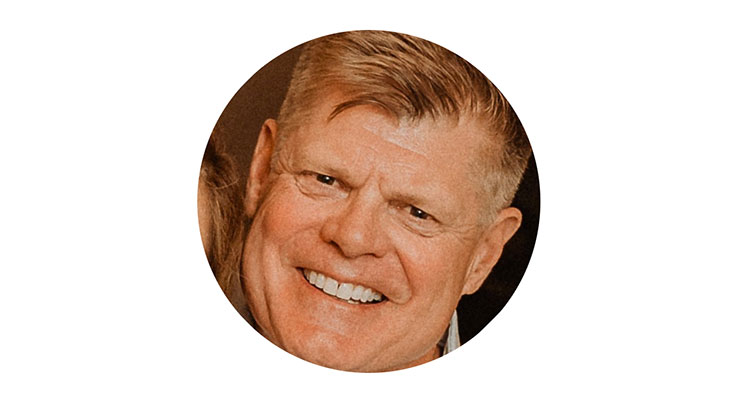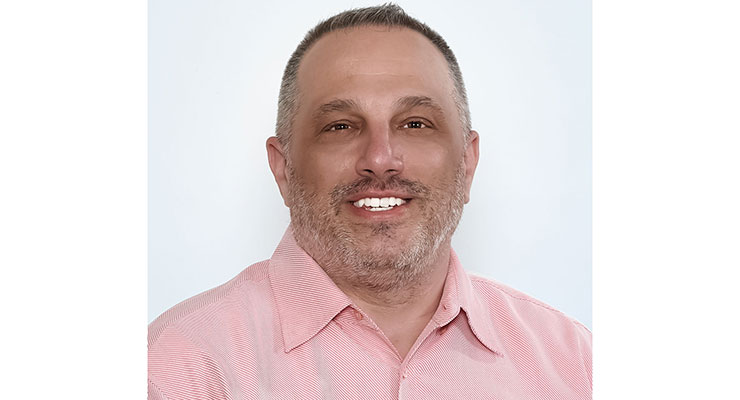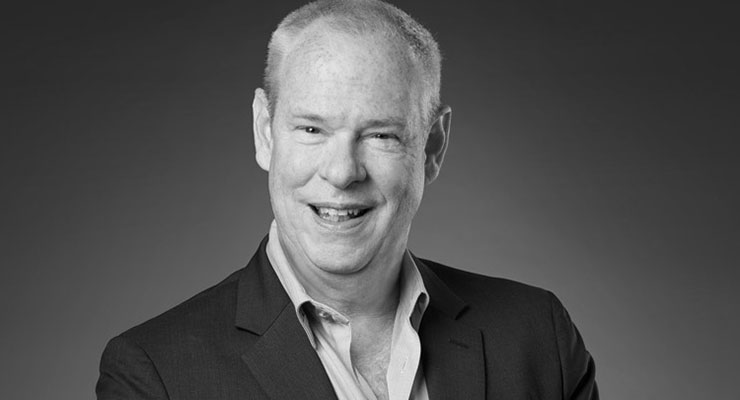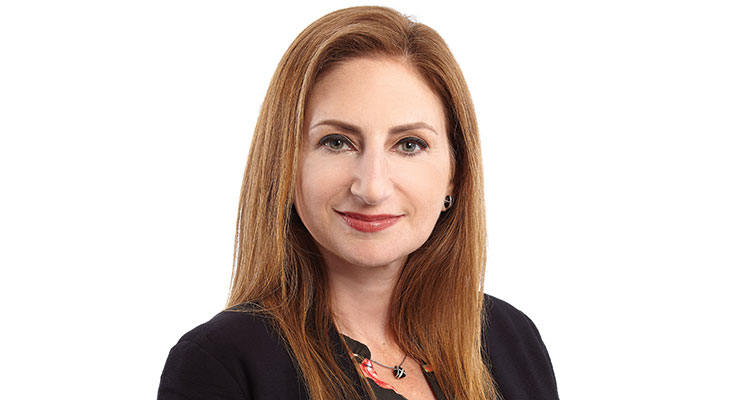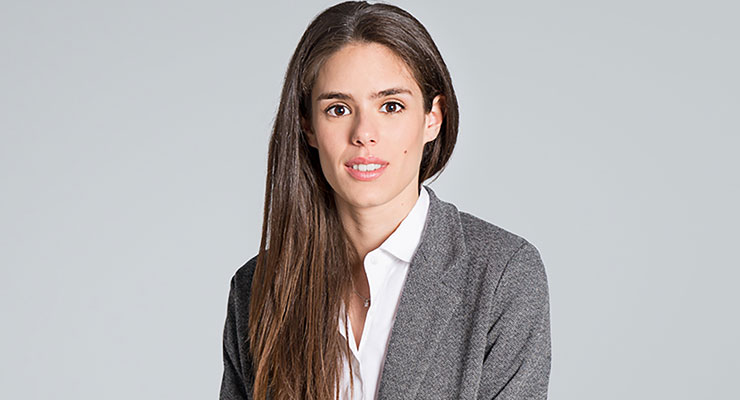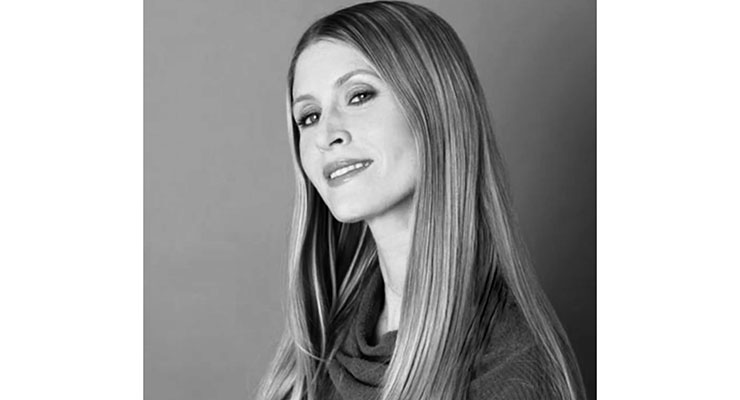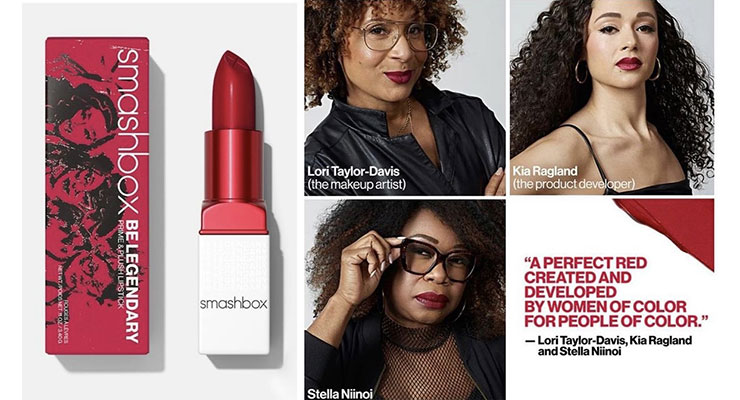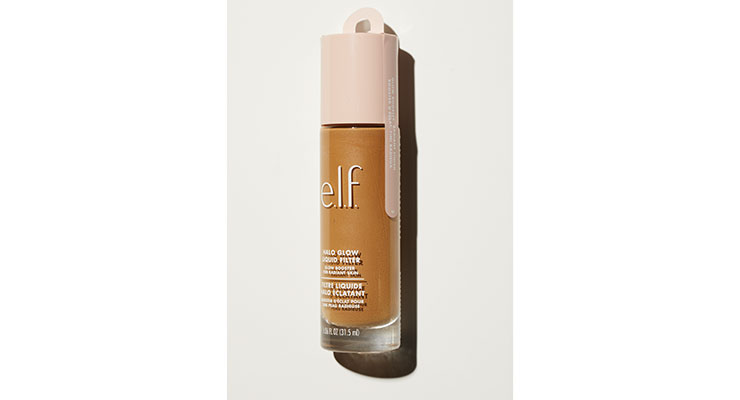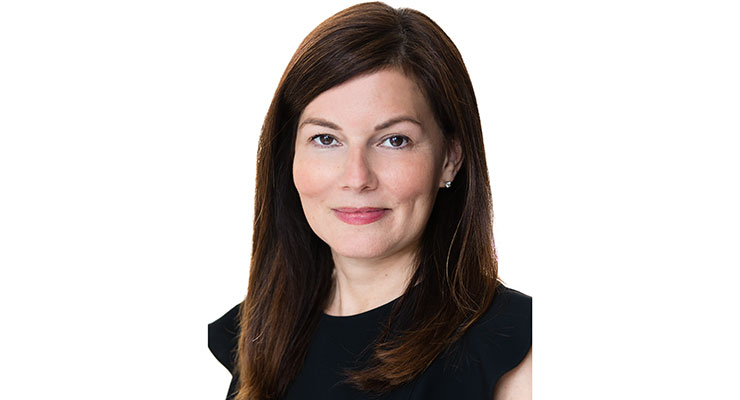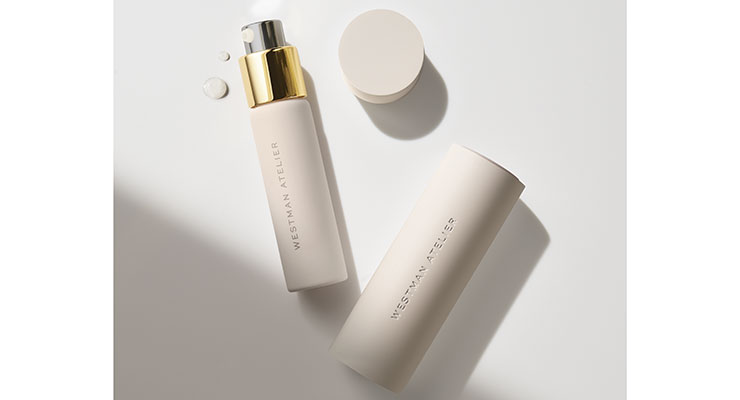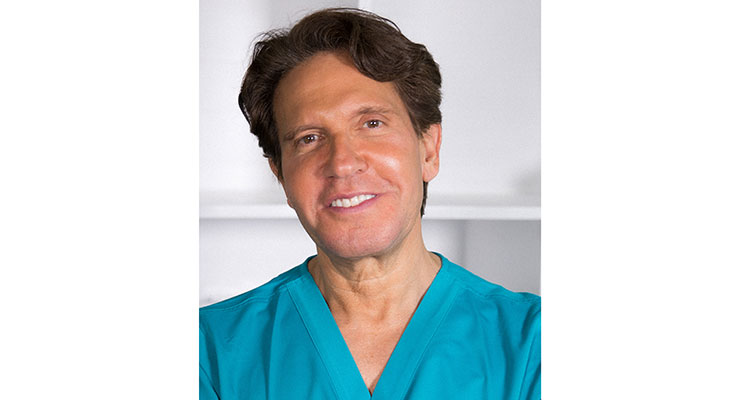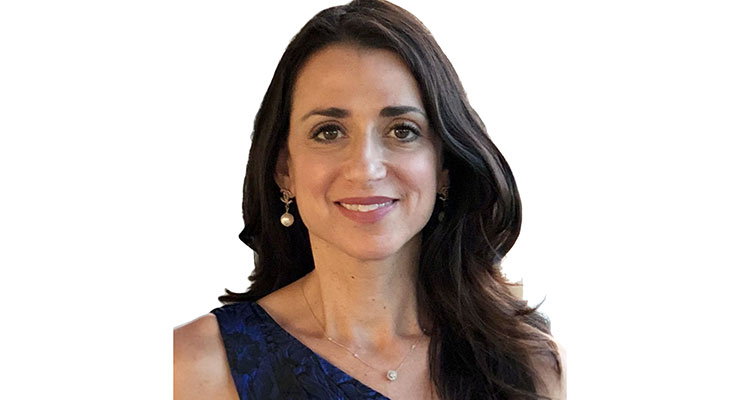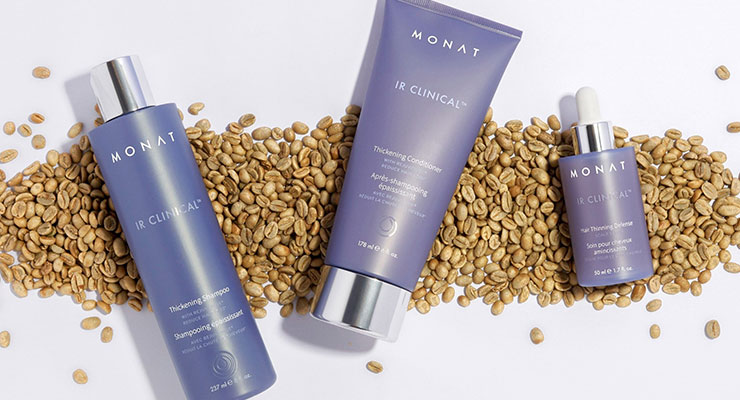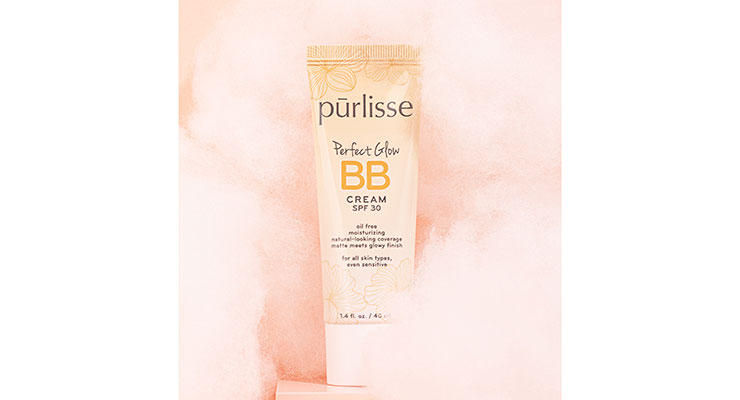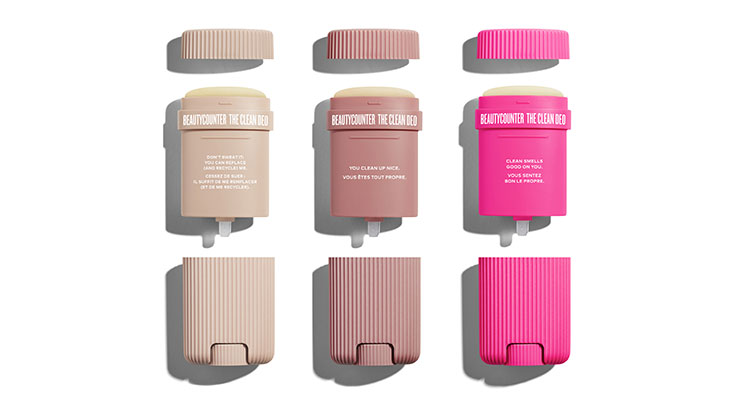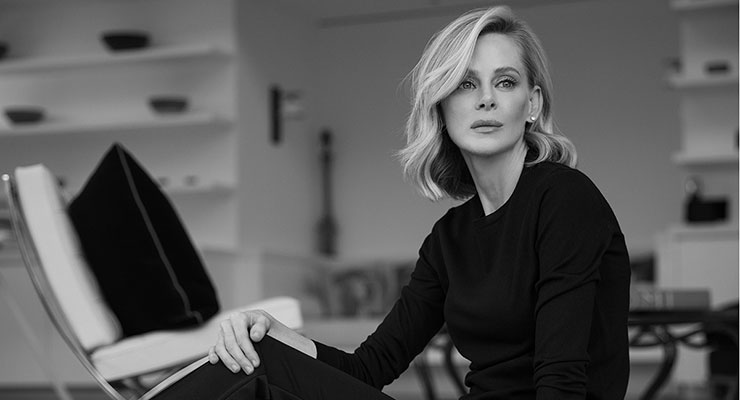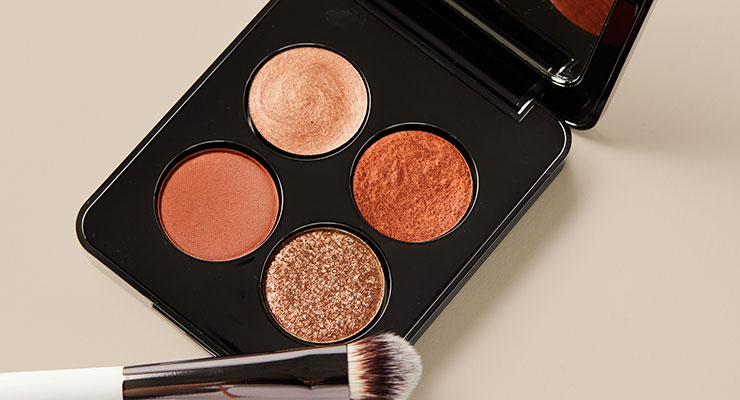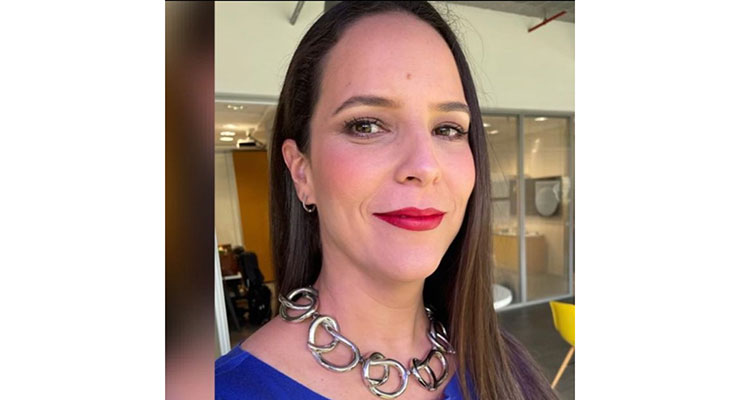Jamie Matusow, Editor-in-chief04.26.23
In what many cosmetic industry experts agree is the greatest shakeup ever in the packaging industry—largely consumer-driven and climate-change prompted—suppliers, designers, brands and retailers have moved bravely and purposely forward.
Materials, design, formats and thinking have all evolved fairly quickly. Where are we now, with certain legislative deadlines looming? Has the focus shifted as we move ahead?
One growing trend: Consumers are seeking authenticity in sustainability claims, and non-transparent brands are being called out for inconsistencies.
We asked a cross-section of designers, brands and suppliers to share their perspectives and predictions—and in some cases, a recently launched sustainable packaging design—for a glimpse at some of today’s leading trends and what we can expect more of in years to come.
Following are their thoughtful responses to these THEN and NOW questions:
—NOW: In your opinion, what has been the most significant development/challenge/opportunity as far as sustainable packaging, in general, within the last two years—and how does it affect product/package development?
—FUTURE: What does the future hold for cosmetic packaging? What do you foresee as the greatest changes/challenges/opportunities ahead for brands, suppliers, consumers?
Designers Talk Sustainable Packaging
Yeonji Kong, Art Director of Pipopappo Design
NOW: Along with the growth of e-commerce due to the pandemic, people’s expectations for packaging have also increased. They now expect ‘durability’ as shipping has become the major way for products to reach consumers, and ‘brand representation’ as the package becomes the first brand experience for the customer, just as it once was in stores.As people care about the cleanliness of the products, they also care about the sustainability of the packaging, as it represents the brand’s values. Meeting the requirements of both durability and sustainability at the same time will be a more innovative challenge for brands and developers.
FUTURE: The growing popularity of natural and vegan cosmetics is evident as beauty consumers become more aware of clean, safe ingredients and sustainability. Brands have come to understand lifestyle changes due to the pandemic.
What makes brands premium now is to have values that can be expressed in safe, clean ingredients, sustainability, and package circularity. Where once ‘instant benefits’ were important, ‘healthy’ as a source of sustainable beauty is required, and everything related to the product and brand experience needs to be ‘sustainably convenient, and elegantly realistic.’
SUSTAINABLE DESIGN: Yeonji Kong recently worked on the packaging design for “the most beloved shampoo series of Aromatica,” a brand that aims to create products that are sustainable for both the Earth and humans.
She says, “We finally succeeded in transforming the product packaging for the 2021 edition into a colorless, transparent, 100% PCR container and cap. The result is the easiest-to-recycle package design ever, made entirely of recycled materials.”
Jo Barnard, founder & creative director, Morrama
NOW: The development of better and more accessible carbon measuring tools over the past two years has created an opportunity for more accurate carbon accounting and supply chain transparency. This is vital if we are to make real progress in designing and producing truly sustainable packaging.Being able to measure the effects of even the smallest decision earlier in the design and development process rather than relying on hindsight Life Cycle Analysis will help accelerate brands’ transition to net-zero.
SUSTAINABLE DESIGN: Morrama’s latest design innovation is Maya–a family of refillable cosmetics packaging. Created to bring more options to brands looking to reduce their environmental impact, the range includes lipstick, palette and loose powder packaging along with pumps and pots for creams and serums.
All come with refills made from renewable cellulose pulp that can be recycled as paper waste at the end of life. Typically designing bespoke products for brands, this is the first time Morrama has launched its own range, which is now available for companies looking for something they can customize.
Jeffrey Joss, Founder, MOJO Product Design
NOW: I’ve been watching the industry shift as developments rapidly evolve in packaging sustainability. New sustainability, recycling, and circular economy regulations are being implemented across all continents.The challenge companies are facing is how to re-imagine their packaging to meet these new regulations without sacrificing quality and brand reputation. I see many opportunities with the innovation in materials, manufacturing and shipping methods.
The Beauty category is leading the way, which is important due to the sheer volume of packaging. While many consumers demand more eco-conscious packaging, I believe we need a more concerted effort to achieve the needed impact.
SUSTAINABLE DESIGN: MOJO designed Izzy, the world’s first zero waste beauty line. The product line has won 14 sustainability and eco-conscious awards to-date. I
would say the 3 biggest challenges when it comes to Izzy’s packaging would be: stainless steel up-front costs + cost to scale; executing circularity at retail; and customers respecting the circularity and making timely returns. Izzy only works to meet its circular eco goals and becomes profitable when the packs are returned for recycling and refills.
Nick Vaus, Partner & Creative Director, Free the Birds
NOW: Brands need to continually improve their packaging to make it more sustainable throughout the supply chain. It’s now a prerequisite for brands to include sustainability in their products, but it’s not easy, it takes longer, and it’s often more expensive—however the rewards are far greater.The biggest challenge we have seen in recent years is that brands are not allowing enough time to design or source responsibly or sustainably.
Our role within Brand Design and Idea Creation is to challenge, but provide alternatives for our clients, from small nudges to fundamental changes. However, to make any changes we must act at lightning speed. Let’s act together—short-term pain for the brands, but with long-term gain.
SUSTAINABLE DESIGN: Though not a beauty brand, Cert is a D2C launch from Hydrachem, leading suppliers of hospital standard cleaning and disinfecting products for the NHS—that provides a dissolvable tablet which provides effective surface cleaning against the Covid virus, by using detergent and disinfectant.
Free The Birds delivered every brand aspect of the project and sourced reusable packaging in just three weeks. As a result, the bottles are both reusable and recyclable, and the tablet form solution reduces the weight of sold products, which decreases the CO2 needed for transportation.
Packaging Suppliers Discuss Sustainability
David Heuback, Account Manager, Inoac Packaging Group
NOW: "One word, ‘Awareness.’ The ‘sustainability march’ is everywhere," says Inoac's David Heuback. "Industry periodicals, trade shows, advertising and social media are only the tip of the iceberg. The sustainable journey will be ever evolving, and to succeed as a corporation, one’s level of participation will be critical to their success going forward."FUTURE: "Evolution and Innovation are key as society becomes more and more educated. Speed to market has always been at the forefront of the Cosmetic and Fragrance/Beauty Industry, and that will never change. There will be leaders and followers, as sustainable technologies are ever evolving."
Mark Bellard, President, Siloa
NOW: "PCR rates are increasing and quality is improving. Eco resins will also become more commonplace and material suppliers are making huge strides," says Siloa's Mark Bellard. The replacement of thermoplastics with organic alternatives will gather steam.FUTURE: "Education in all directions. The supplier challenge is to know the options and have access to the materials, technologies and innovation that meet the demands of the brand. The brand has to understand consumer expectations and minimize compromise in order to retain and grow their market."
"Challenges in supply of new material solutions will be an unavoidable hindrance to an improving landscape. We’ll have some giant leaps forward, but mostly it will be small steps and gradual change achieved by embracing the challenges."
"The recycling rate is growing in the U.S. which is good news, but we have a long way to go, and the 8-10% rate we currently have is frankly pathetic. U.S. plans are to increase this to 50% by 2030, which will leave us well behind the current rate of other Western nations."
Tara Cary, Eastman Cosmetics' Packaging Segment Manager
NOW: "Molecular recycling, which enables 100% recycled content with products that are indistinguishable from virgin, is a huge step forward in sustainable packaging," says Eastman's Tara Cary. "This allows brands to choose packaging with high levels of recycled content without compromising aesthetics, safety or performance."FUTURE: "In a recent consumer study, Eastman found that if consumers could design their perfect skincare product packaging, it would be made from recycled plastic and would have the ability to be recycled at end-of-life."
"Globally, nearly 1 in 2 consumers would prefer both features and would not sacrifice one for the other. The same study showed that consumers are not willing to make design or aesthetic tradeoffs to get these features. Brands must educate their consumers on packaging through claims, storytelling and certifications in order to truly leverage these sustainability benefits."
Gary Bernstein, Sr. Director of Packaging & Sustianable Solutions, Neenah
NOW: "Plastic replacement seems to be the most significant and impactful development. Brands that have figured out a way to eliminate or reduce plastics are getting noticed," says Neenah's Gary Bernstein. "Refillable containers, changing liquids to bar form, and packaging in 100% PCW and recyclable cartons are just a few examples that impact."FUTURE: "One of the biggest opportunities is around consumer education. There are many conflicting messages and misconceptions around what is sustainable. It is such a broad topic, and perceptions range from concern over cutting down trees to plastic in the ocean."
"At the consumer level, there needs to be more clarity and education versus marketing to appear sustainable. Some of the many challenges or opportunities include proper recycling at the consumer level, municipalities doing their part in separating waste, and sharing accurate information when advertising."
Musa Davis, Global Chief Marketing Officer, Global Innovation, WWP Beauty
NOW: "We have seen an influx of regulations globally around plastics to decrease their environmental impact," says WWP Beauty's Musa Davis. "This is spearheading the use of more eco-friendly materials such as bio-based, ocean plastic, and molecular recycled material—and more simplified designs comprising mono-material, ultralight, fewer parts, refillable and reusable packaging solutions."FUTURE: "As the beauty industry advances toward sustainable solutions, exciting opportunities arise, but decarbonization still remains the major challenge. While most sustainable packaging focuses on material and recycling, they comprise only 25% of the total packaging’s CO2 emission."
"The remaining 75% comes from power sources used in the production process.
With over 90% of plastic packaging being single-use, the need for a circular packaging design to be refillable, reused, recycled, or composted has never been greater."
"Breakthrough technology in bio-restorative and compostable materials that enrich the environment at their end-of-life will soon be an alternative to legacy plastics."
Brain Saputo, CTO & President, Seacliff Beauty
NOW: "I think we can all agree that the packaging industry has made tremendous progress toward more sustainable offerings," says Seacliff Beauty's Brian Saputo. "You would be hard pressed to walk one of our tradeshows these days and find a booth with nothing sustainable to share.""Strong innovations coming to fruition like molecular recycling (pyrolysis) and the capture of ocean and ocean bound plastic like Seacliff’s partnership with #Tide Ocean Materials show real progress."
FUTURE: "For me, the most important next step may not be with the beauty, but with the second half of the equation—finding innovative ways to supply clean, cost-effective post-consumer resins (PCR). Consumers and brands want to do the right thing, but cost and convenience are still very important, especially in the current economy."
"Recycling needs to be easy with packs that are mono-material design or easily separatable. PCR needs to be clean and cost effective—pyrolysis shows promise in this area. Unfortunately, the recycling rate in the U.S. for packaging is still painfully low. We must continue to innovate ways to effectively and efficiently close the loop on plastic waste."
Priscille Allais, Presidnet & CEO, Cosmogen
NOW: "We have worked mainly on the dismantling of packaging to improve the recyclability and allow the reuse of applicators with a refill, the reduction in the use of plastic in general and virgin plastic," says Cosmogen's Allais. "In particular, we are reducing the number of components and/or materials, using mono-material packaging and accessories, and packaging intended for solid formulas is popular."FUTURE: "Ecodesign, guided by the following parameters, is essential, while keeping in mind the brand and its consumer, and therefore these parameters are inseparable from sustainability: Ergonomics, Ease of Use, Reuse and Refillable when they are offered, and of course ‘sensoriality’ and efficiency."
"The user experience remains at the heart of the approach. Finally, these packages must be easily ‘industrializable,’ for any kind of formulas, and must keep their role of enhancing the brand toward its consumer. For example, we design refills as being inseparable from the original packaging and, for solid formulas, we strive to develop packaging that fits a luxury image."
Steve Corsi, CEO & Head of Packaging Development, Roberts Beauty
NOW: "The massive shift from virgin fossil fuel-derived resins has long motivated Roberts to bias our innovation program to development of new efficient packaging designs across categories," says Roberts Beauty's Steve Corsi. "New materials and improved material origination, particularly Roberts’ partnership with Oceanworks, have pushed the lifecycle properties of our packaging significantly beyond where we were two years ago.""The sustainability mandates from organizations such as Sephora, L’Oréal, and Credo Beauty are also very significant; directly or indirectly, these seem to be driving a sizable part of the demand that we see from brands that come to us for solutions."
FUTURE: "Short answer: EPR or Extended Producer Responsibility could represent the biggest change/challenge/opportunity in our field. Long answer: The field of sustainability is constantly changing and that itself represents the challenge/opportunity."
Bret Hadley, CEO, Roberts Beauty
FUTURE: "The biggest factor to keep in mind with regard to sustainability in beauty packaging is authenticity in the eyes of the end-user consumer," says Roberts Beauty's Bret Hadley. "Consumers have to understand the sustainable solution and message, and believe it is a genuine solution to the problem. You can’t fake it."Rick Ponte, VP of Engineering, APC Packaging
NOW: "In my opinion, the most significant development in sustainability has come from the brands," says APC Packaging's Rick Ponte. "Making a commitment to their consumers by ‘X’ date they will be at a certain level of sustainability, has driven the industry to embrace it and own the change to more sustainable products."FUTURE: "I think one of the most important things to keep in mind is that as sustainability increases, the infrastructure for recycling needs to increase dramatically as it is lagging way behind. This will also most likely come at a cost to brands and the consumer."
Rob Lynch, Founder & CEO, Apogee Development
NOW: "In the short term, the challenge will continue to be how we use currently available technology to make the best packaging and material choices while still striving for beautiful and unique packaging designs.""This means helping customers identify simple design decisions that improve recyclability and sustainability in the shorter term. These might include not gluing metal collars or plaques onto glass or choosing a threaded pump instead of crimp-on pump so that each material can be separated for recycling after use. This may also include reducing the amount of packaging used and balancing how to maintain great eye-catching, luxury packaging while using less materials."
FUTURE: "It is important to recognize that the current focus on sustainability is not a short-term trend. It is the direction of our industry and is becoming a minimum requirement for beauty designs going forward."
"With a greater focus on sustainability in schools for Packaging and Design, there will be an ever-increasing drive to develop innovative materials and packaging choices that further reduce environmental impact."
SUSTAINABLE DESIGN: "In 2022, Apogee Development partnered with Batallure Beauty to launch a new line of fragrances for Tory Burch. This project is an example of how sensible design choices can be used to optimize the sustainability of the product."
"The cap is made entirely of Polypropylene rather than using a harder polymer such as ABS, which might be chosen to enhance the sharpness of the logo and reduce the visibility of parting lines. Also, the customer opted for a threaded pump rather than a crimp or press-on. This allows the bottle to easily be separated once the fragrance is used up so that these pieces can be recycled separately."
Sari Sternschein, President, Qosmedix
NOW: "One of the most notable developments is the increasing use of plant-based materials," says Qosmedix's Sari Sternschein. "Qosmedix has recently launched our new biodegradable cosmetic sponges, which are made from eco-friendly ingredients like rice husk and corn powder. These sponges are 44% biodegradable and help reduce users’ carbon footprint and impact on landfills."FUTURE: "We must keep in mind the overall environmental impact of the packaging from cradle to grave. This includes factors such as transportation and energy use during production, the amount of waste generated during manufacturing and distribution, and the end-of-life options for the packaging."
"A challenge we will continue to face is properly educating consumers on how to properly dispose of the packaging whether it is recycling or composting. And with recycling procedures varying from town to town, there is no one-size-fits-all answer right now. Hopefully in the future, this will be regulated at a broader level."
Aida Rodriguez, Environmental Manager, Virospack
NOW: "To me, the biggest challenge for the packaging industry has been the social war that has been created toward plastic," says Virospack's Aida Rodriguez. "The numerous social movements— such as 'zero waste' or 'break free from plastic' have had a big impact on consumption patterns. Consumers are now ready to purchase more conscious products and no longer accept greenwashing.""But the point is: Can plastic be durable? My guess is yes. The packaging industry has turned this challenge into a business opportunity."
"Innovation in new materials is on the rise, but one key step toward circularity in plastic packaging is chemical-PCR. Chemical recycling is an innovative technology that breaks down plastic waste into its original raw materials or chemical products. This development is key to cosmetic packaging as it maintains the raw materials physico-chemical characteristics such as chemical resistance, which is so important in the preservation and protection of cosmetic products."
Insights from Beauty Brands
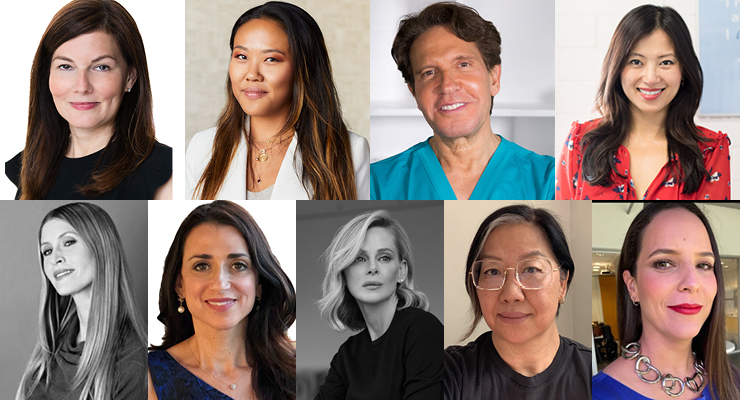
These beauty brand packaging executives are succeeding with sustainable packaging options. (L-R, Top row): Angela Piner, Westman Atelier; Jen Lee, Beautycounter, Dr. Dennis Gross, Dr. Dennis Gross Skincare; Jennifer Yen, Purlisse. (L-R, Bottom row): Jill Tomandl, The Estée Lauder Companies; Laura Garratt, LDG Global Beauty Consulting; Tiffany T. Scott, Roen; Laura Otani, e.l.f. Beauty; Renata (Duda) de Paula Eduardo da Fonseca, Natura.
Jill Tomandl, VP, Product Development & Innovation, West Coast Brands, Estee Lauder Companies
NOW: "It is exciting to see the evolution of sustainable packaging materials. For instance, PaperFoam is made of industrial potato and cellulose that can be injection molded. It is compostable and recyclable. It can be used for primary and secondary packaging. A range of bold colors can be created at lower quantities than fiberboard.""Mycelia is a natural and sustainable material made from mushrooms that can be used for primary packaging. The mushroom grows into the desired shape, then a thermal treatment makes the package inert. It is biodegradable and organic."
FUTURE: "The cost for sustainable materials can be expensive and the business model for refillable packaging can be a challenge, but thankfully, it’s starting to change."
SUSTAINABLE DESIGN: "In addition to sustainability, inclusivity and social impact are also growing movements. The Smashbox Be Seen Be Legendary Lipstick is the ‘perfect red shade created by women of color for people of color to give visibility to our diverse employees and support the community through social impact.’ The core line packaging was customized with a digitally printed, symbolic design and illustrations of the creators were featured on the FSC certified carton design."
Laura Otani, Head of Packaging & Sustainable Design + Ellen Leung, VP of Project Management, e.l.f. Beauty
NOW: "At e.l.f. Beauty, packaging sustainability is grounded in three principles: reducing footprint—‘less is more’—increasing use of sustainably sourced packaging, and increasing recyclable & reusable packaging," says e.l.f. Beauty's Laura Otani and Ellen Leung."In addition to approaching new launches with an environmental lens, we review our current packaging portfolio for ‘less is more’ opportunities to reduce packaging weight, reduce certain decoration and evaluate materials used."
"To date, we’ve removed decorative finishes, replaced folding cartons with hanging labels, and reduced the thickness and complexity of secondary cartons, to name just a few. On the material side, we have a goal of 100% of our paper product cartons be Forest-Stewardship Council certified by 2025."
"We’ve also taken steps to replace vacuum form platforms with paper board and moved brush kits out of vinyl and into lighter weight polypropylene plastic, with a smaller environmental footprint."
FUTURE: "A key industry challenge is to improve the ease of recycling for the consumer. The beauty industry is especially challenged with a prohibitive size factor. Products under two-to-three inches in size aren’t typically curbside recyclable, regardless of the material they are made of. We need beauty, packaging, and material recovery to come together to work towards systemic change in support of a circular economy."
SUSTAINABLE DESIGN: "e.l.f. Beauty’s hanging labels— ‘unicorn labels’—have replaced some of the brand’s hanging boxes." (Photo above by Ruben Cantu)
Angela Piner. Global Head of Branding, Package Design & Development, Westman Atelier
NOW: "It is very promising to work with the new innovative sustainable materials emerging in our space," says Westman Atelier's Angela Piner. "This requires test trials in existing custom molds and or new molds for application, color, performance and compatibility.""When you are creating a luxury good, these are very important attributes to the final design so trial and error, time and investment are requirements to validate these new materials."
"A challenge in product design is application of materials. Many are form dependent, meaning the sugar cane derived sustainable material applied for the tottle design of the Westman Atelier Vital Skincare Drops would not work in other applications such as a compact. The tottle form also lends itself to be a monomer which again would be more challenging in other packaging structures. In reality, only a small percentage of packaging is ever properly recycled."
FUTURE: "I think refill solutions especially in the luxury space will be become more common in the future. I am also hopeful for new emerging recycling technologies and a growing infrastructure to advance a more sustainable future."
SUSTAINABLE DESIGN: "Westman Atelier Skin Activator is a hyper-potent serum with 12 actives housed in a luxurious refillable case in Westman’s iconic package design structure with a glass vial refill. We view our package designs as objects that enhance the luxury experience of the product."
"The transition to refillable packaging is a natural progression to maintain the luxury experience while reducing impact. The challenge is moving consumers and retailers in this direction, which I think will become an increasing trend in the future."
Dr. Dennis Gross, Board-Certified Dermatologist & Co-Founder of Dr. Dennis Gross Skincare
NOW: "When sourcing packaging, sustainability is always top of mind—but we never compromise on product efficacy.""This means finding a balance between using active ingredients, state-of-the-art delivery systems and preserving the product potency for the entirety of its lifecycle with compatible, sustainable packaging. This is no easy feat. With each new launch, we follow vigorous protocols to meet and surpass these standards."
SUSTAINABLE DESIGN: "Our team has been working behind the scenes to research the best sustainable solution for our peel pads. While we have had challenges finding compatible materials without jeopardizing the quality of the formula, we are committed to continuing to strive toward creating sustainable packing that delivers the potent peel formulation that our clients know and love."
Laura Garratt, LDG Global Beauty Consulting, Founder & Chief Product Officer + VP of Innovation & Marketing, Monat Global
NOW: "The most significant development in sustainable packaging within beauty is that consumers continue to demand transparency from brands, across all areas inclusive of packaging, clean formulas and manufacturing processes," says Monat Global's Laura Garratt."Sustainable practices have steadily become cost of entry to play in today’s marketplace. One driver that is pushing innovation is the importance of using recyclable materials. There is continued pressure on the beauty industry and all parts of the development process to be more responsible, and the need to have sustainable and ethical packaging."
FUTURE: "Demands placed by consumers continue to force the market to innovate at every level. Innovation in refillable packaging is leading the charge for the future as it reduces waste while keeping an elevated aesthetic."
"As sustainability gains more and more momentum, the goal is to create beauty products and packaging that are harmonious with nature, and that protect the environment while making us feel good in every way."
SUSTAINABLE DESIGN: "Monat Global announced a packaging and design refresh for their premium haircare lines and kicked it off with the product launch of the IR Clinical Collection, which reinforces thicker, fuller- looking hair with 3 products."
"Some of that challenges we faced executing this refresh was to source sustainable colorants and bottles that contained a percentage of PCR, while maintaining a premium look."
Jennifer Yen, Founder & CEO, Purlisse
NOW: "The biggest challenge we’ve had as far as sustainable packaging goes is that since we use aluminum packaging—which is 100% recyclable—it’s more complicated to get the designs we want onto the packaging," says Purlisse's Jennifer Yen. "Although we have to simplify our designs a little bit, we still love our packaging and are happy to do so because we pride ourselves on being a sustainable company."SUSTAINABLE DESIGN: "When we first launched our No. 1 best-selling Perfect Glow BB Cream, it was a challenge because it’s not easy to achieve intricate designs on 100% recyclable packaging."
"We decided it was best to simplify our design because we wanted to do everything in our power to help save the environment as best we can, which is why we opted for 100% aluminum packaging."
Jen Lee, Chief Impact Officer, Beautycounter
NOW: "Packaging in the beauty industry is challenging—the packaging industry has made vast improvements over the last few years to be more sustainable, but still has a long way to go," says Beautycounter's Jen Lee. "The biggest challenge is ensuring that as much of our packaging as possible makes it to recycling facilities."FUTURE: "Designing for circularity, including refillable, recycled, recyclable packaging, is one of the biggest opportunities to boost sustainability for our brand and the industry overall."
"At Beautycounter, we are working towards achieving 100% refillable, recyclable, recycled, compostable or reusable packaging by 2025, and we’re already halfway towards this goal. We have seen high repeat purchase rates for our refills that serve as evidence that our customers appreciate the refillable concept."
"In the last few years, we’ve invested in packaging materials that are recyclable and more circular in nature such as post-consumer recycled resin."
SUSTAINABLE DESIGN: "Beautycounter’s The Clean Deo is housed in refillable and recyclable packaging made of mono-material. The insert can be tossed straight into the recycling bin; after, you can easily snap a refill into the outer packaging."
Tiffany Scott, Founder & CEO, RÓEN
NOW: "There are many challenges with waste and sustainability in the beauty space and the packaging of beauty products is one of the biggest challenges," says RÓEN's Tiffany Scott. "I’m constantly discussing this with our manufacturers and pushing for more environmentally friendly options.""PCR plastic has become a wonderful option to help reduce our impact on the environment. The technology is there to make components with 100% PCR; however, many times it’s too costly, especially with components made with a higher percentage of PCR."
"One of our early triumphs was partnering with TerraCycle and their zero-waste box platform which is dedicated to recycling products that are difficult to recycle. TerraCycle is a wonderful company that responsibly breaks down cosmetic components, so they don’t end up in a landfill."
FUTURE: "I am passionate about Mother Earth, and this theme carries throughout the culture of our brand. We currently are working on an innovative sustainable packaging solution with our manufacturer that is attractive, functional and one that consumers will embrace, rather than it being too complicated."
SUSTAINABLE DESIGN: "RÓEN uses a high-percentage of PCR in their packaging, and also partners with TerraCycle."
Renata de Paula Eduardo da Fonseca, International Buisness Development, Natura
NOW: "In 2010, we began replacing conventional plastic in our regular packaging and refills with green plastic—made from a renewable origin that can be recycled," says Natura's Eduardo da Fonseca. "We did this for many of our brands, including Ekos, Chronos, Lumina, Mamãe and Bebê. This reduced emissions by approximately 6,000 tons of carbon per year.""In 1983, we were the first Brazilian cosmetics company to offer refills. And our skincare line, Natura Chronos, was the first anti-signs brand to launch refills in Latin America."
"Our goal by 2020 was to collect and dispose of 50% of all packaging that we make available to the market. We reached 52%—and 27% of our products have a refill option, excluding SKUs whose concept does not apply, such as bar soap. More than 100 million 1-liter PET bottles no longer go to waste due to Natura refills."

